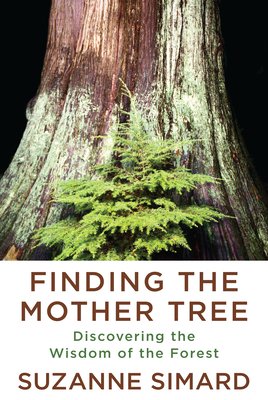FINDING THE MOTHER TREE, by Suzanne Simard
From the world's leading forest ecologist who forever changed how people view trees and their connections to one another and to other living things in the forest--a moving, inspiring journey of discovery of how, as a child in love with the woods, the author came to believe that trees communicate with one another and the story of how she proved her seemingly laughable theory, uncovering their secrets as well, and in the process became a world-renowned scientist. Suzanne Simard is a pioneer on the frontier of plant communication and intelligence; she's been compared to Rachel Carson, hailed as a scientist who conveys complex, technical ideas in a way that is both dazzling and profound. Her work has influenced filmmakers (the Tree of Souls of James Cameron's Avatar) and her TED talks have been viewed by more than 10 million people worldwide.
Now, in her first book, Simard brilliantly illuminates the fascinating and vital truth about trees--not simply the source of timber or pulp, but a complex, interdependent circle of life on which we rely for our existence--and at the center of it all, the Mother Trees: the mysterious, powerful forces that connect and sustain them.
Born and raised in a logging family in the rainforests of British Columbia, Simard spent her days as a child cataloging the trees from the forest: as she came to love and respect them--and to wonder about them--she embarked on a journey of discovery, and struggle. She has spent a lifetime piecing together startling truths: that trees have perceptions, language, behaviors, memory, recognition of neighbors, reciprocity, healing capacities, and wisdom. Finding the Mother Tree is the fascinating story of how Simard overturned widely accepted beliefs to systematically prove, against all odds, that trees and plants in the forest are connected underground in an immense fungal web , (which Simard calls the Wood Wide Web). That the biggest, oldest trees, the mother trees, are the hubs of the network, with the fungal mycelia, the links.
Simard not only invites us to understand trees in an entirely new way--she also makes clear what we can learn from the natural development of forests, in order to create a more civil and resilient society.

